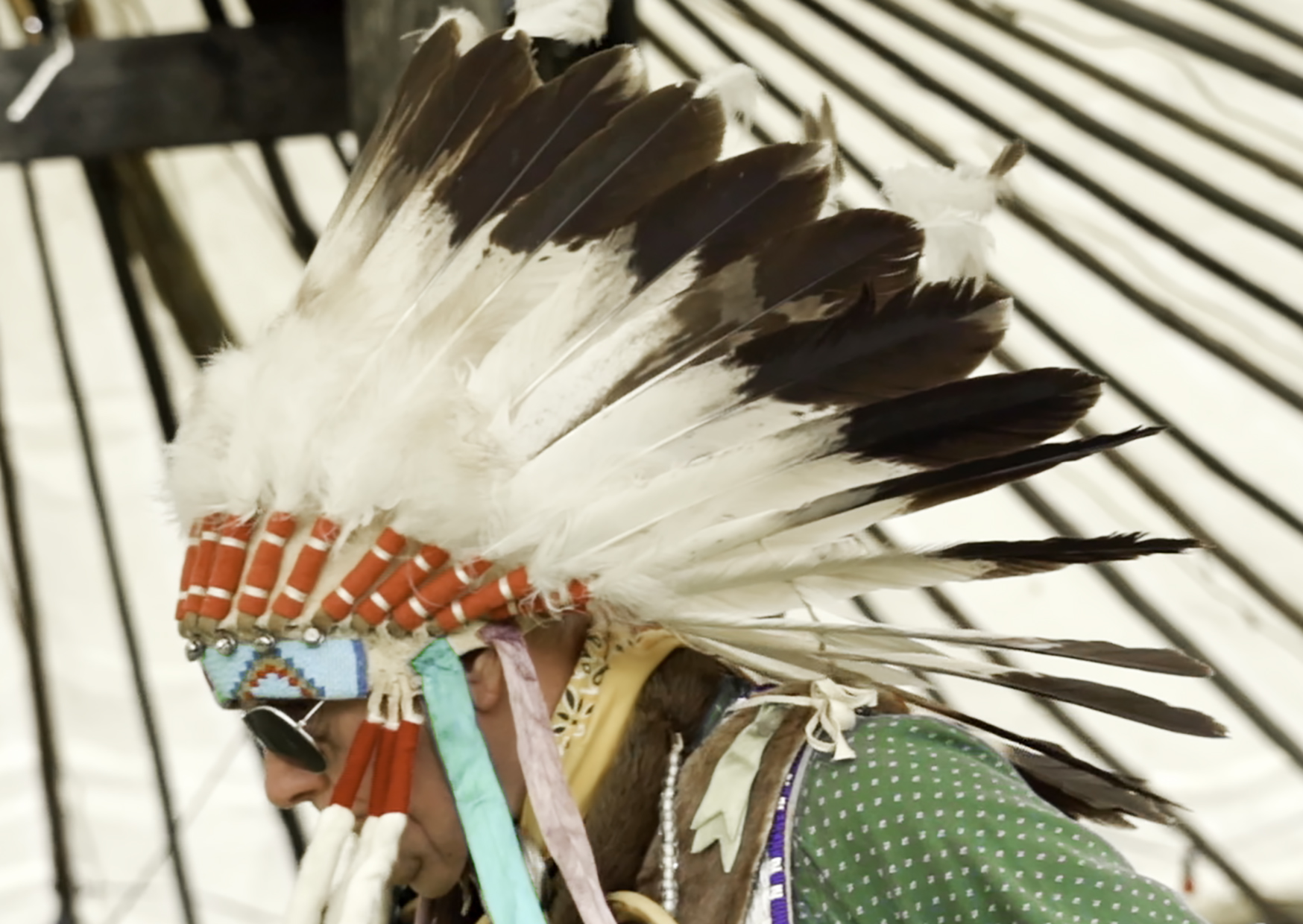Tribal Affairs, 2020
HD video, sound stereo, 10:18 min
This work is also distributed by LIMA
Watch trailer here
©2020 Patricia Werneck Ribas
 (video still)
(video still)
This project was made possible with the financial support of the Mondriaan Fund.

Press Release:
Since the 1800s German people have been fascinated with Native Americans. A rough estimate is that 40,000 to 80,000 people, all over the country, participate in ‘powwows’ where they dress up in traditional clothing, dance together and chant. Patricia Werneck Ribas traveled to a little village called Grimma close to Dresden to collect images of these gatherings and to research these phenomena. It may be a surprise to learn that dressing up as indigenous peoples is a thriving subculture in these cold lands. These scenes of German people in full native costume dancing in a circle inside a huge tent have a documentary character. The artist wanted to go beyond looking at the absurdity of white people dressing up as Native Americans, however. We see men and women wearing headdresses made of eagle feathers chanting and stamping their feet while wearing noisy bells on their ankles. In their leather beaded moccasins, fringed patchwork aprons, shiny sequined skirts, they slowly circle the large canvas tent. Patricia Werneck Ribas learned that these chants are carefully researched and the rituals are supposedly ‘authentic’. For some people, these gatherings are seen as cultural appropriation and are controversial. For this artwork, the artist has added something else. She edited a conversation between two tribal women from South America looking at the video images of the Germans slow dancing in their ‘exotic’ costumes. The sound of the Europeans chanting can be heard in the background while the women speak. This unexpected combination is neither critical nor condoning these fascinating get-togethers, just opening up a space to reflect on what it means to be ‘the other’.
The video begins with the camera slowly panning down to the ground, showing us where all plants emerge from. From the start, we are invited to look differently at this lush European landscape. The Germans wear clothes inspired by the Sioux and Dakota tribes, and these events belong to a revered history following the extensive German colonization in the Americas. Buffalo Bill, an American soldier, and bison hunter toured Europe, performing in shows that displayed cowboy themes and episodes from the frontier and Indian Wars. These shows inspired German children, and then adults, to dress up in indigenous clothing and learn about the different native cultures. Even before the First World War circuses brought over people from the Americas and powwows became much more common in German towns and villages. Now tourism thrives in reservations in the USA, continuing the German fascination with the ‘exotic’ and romantic idea of the native warrior and a culture that has an ‘innocent’ communion with nature. Stories about the Mid-West, travel diaries, and documentaries about the white people’s colonization of Western states fed into idealistic literature, in particular, narratives of resistance as native societies resisted American dominance. In addition, when the German film industry was in crisis at the start of the 20th Century, German ‘cowboy and Indian’ films helped revive the German film industry, which also fed into the Teutonic fascination with the ‘Wild West’ and people from the prairies.
So, in this video, women from a non-specific tribe heard that some people from the North have affinities with the Indian spirit and organize these powwows in huge tents. Watching this video is as if the two women are also observers of these scenes. Seeing potential in a shared love of nature, they wanted to study the possibilities of contacting the Germans to see if they could be allies in the women’s quest to take over the world, finding solutions to global environmental problems.
This video combines footage of native Germans dancing in a tent with audio and subtitled observations from undisclosed observers. Here, they are viewers, too. Looking at these images is their ‘first contact’ with Northern Europeans. The women wondered – will people in the North be willing to abandon their comforts? What would they give up to help save the planet? The women’s plan is not yet known but there around 40 million indigenous people in Latin America getting ready to organize themselves and investigating the possibilities of working together for a common cause.
In Patricia Werneck Ribas’s video, we don’t see the women, but we hear their voices. Speaking in a mysterious language they say, “Our proposal is unique in the history of humankind. We need to help them overcome greed and individualism.” They are passionate about their mission to transform the world. Fading out at the end, we are still left with questions about the relationship between the indigenous women from South America and the German devotees of North American tribal cultures. Will this encounter be a real possibility of enabling change or are the women’s hopes just a fantasy?
text © Siobhan Wall 2019